Management of Pests and Diseases in Mums: Ultimate Guide to Protecting Mums” delves into comprehensive strategies for chrysanthemum enthusiasts. Integrating pest control methods like companion planting and natural predators ensures a balanced ecosystem. Organic solutions offer sustainable alternatives for addressing common threats such as aphids, spider mites, and whiteflies.
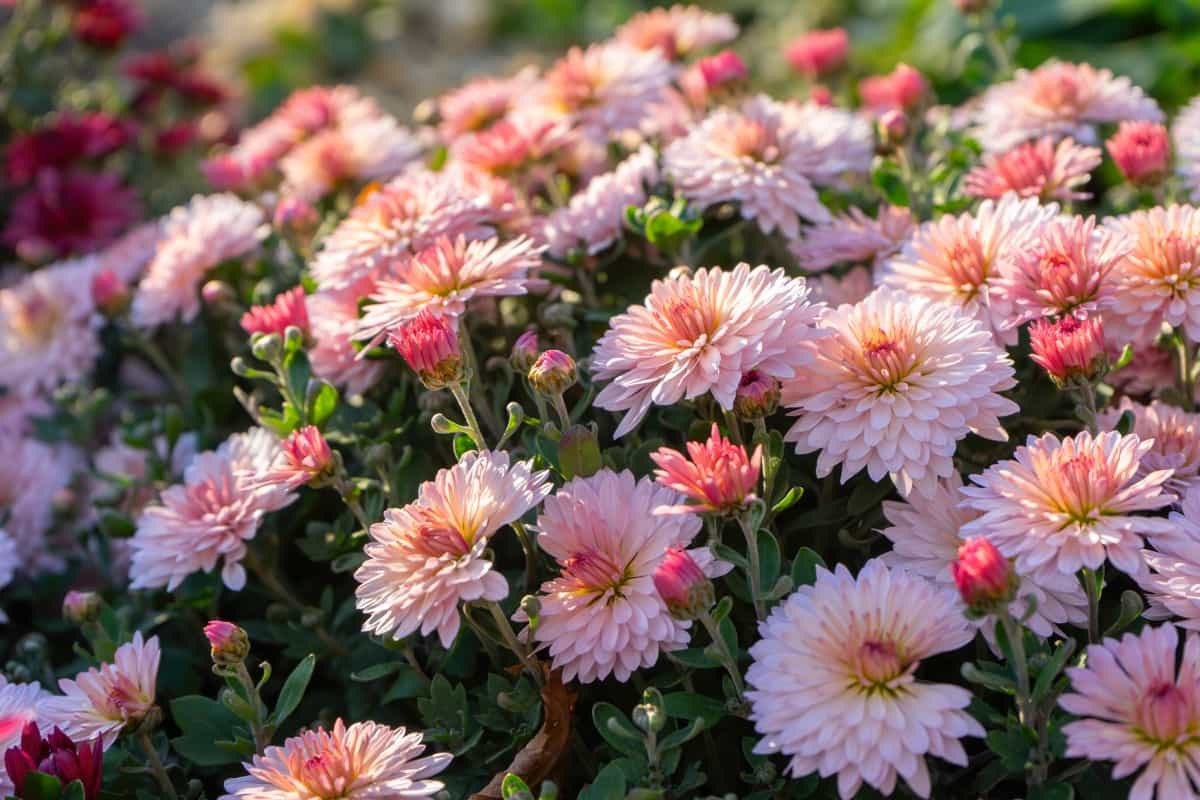
Effective disease prevention tackles issues like powdery mildew, rust, and botrytis blight through proactive measures and proper care. With seasonal tips covering spring preparation and summer maintenance, this guide equips gardeners with the knowledge to safeguard their chrysanthemums year-round, promoting healthy growth and vibrant blooms.
Management of Pests and Diseases in Mums
Understanding Mum Pests and Diseases
Mums are popular fall flowers that come in a variety of colors and shapes. They are generally hardy, easy to grow, but can be affected by pests, diseases that can reduce their health and beauty. Some of the common mum pests are aphids, spider mites, whiteflies, thrips, caterpillars, and leaf miners. Some of the common mum diseases are powdery mildew, rust, botrytis blight, leaf spot, and viral infections. To prevent and control these problems, it is important to follow some good cultural practices and use appropriate management methods.
Identifying Common Pests
- Aphids are small, soft-bodied insects that suck the sap from the plant tissues. They can be green, black, red, yellow, or white. They usually cluster on the terminal buds and young leaves, where they secrete a sticky substance called honeydew that attracts sooty mold and ants. Aphids can also transmit viral diseases to the plants.
- Spider mites are tiny arachnids that feed on the underside leaves, causing yellow spots and webbing. They thrive in hot, dry conditions and can multiply rapidly. Spider mites can reduce the photosynthesis and vigor of the plants.
- Whiteflies are small, white-winged insects that also suck the sap from the plant tissues. They are often found on the underside of the leaves, where they produce honeydew and cause sooty mold. Whiteflies can also spread viral diseases to the plants.
- Thrips are slender insects with fringed wings that feed on the flowers and leaves, causing distortion, discoloration, and scarring. They can also transmit viral diseases to the plants.
- Caterpillars are the larvae of moths and butterflies that chew on the leaves and flowers, leaving holes and ragged edges. Some caterpillars can also bore into the stems and cause wilting.
- Leaf miners are the larvae of various flies that tunnel inside the leaves, creating winding trails or blotches. They can reduce the photosynthesis and aesthetic value of the plants.
In case you missed it: Management of Pests and Diseases in Home Garden: 100% Effective Control and Treatment Strategies
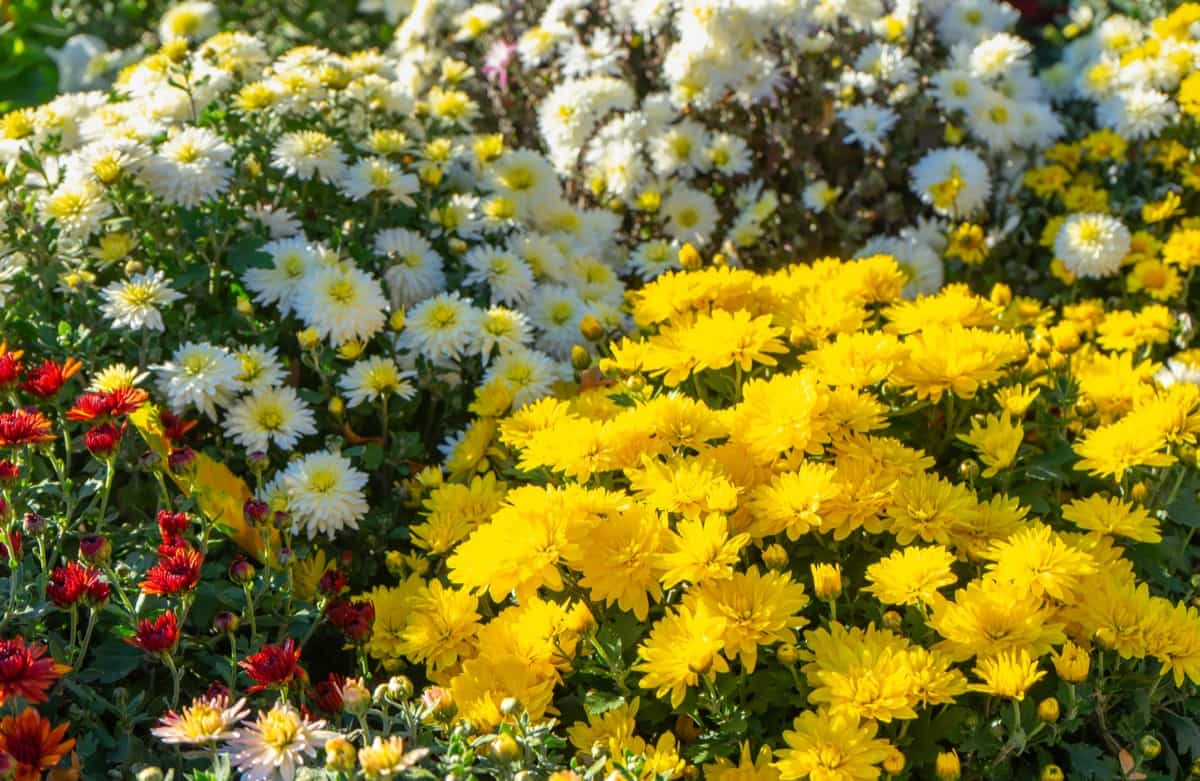
Recognizing Typical Diseases
Powdery mildew, a fungal disease, causes white or gray patches on leaves and stems, reducing photosynthesis and flowering. Rust, another fungal disease, causes orange or brown pustules on the underside of leaves, causing premature leaf drop and plant weakness. Botrytis blight, another fungal disease, causes gray or brown fuzzy growth on flowers, buds, leaves, and stems, causing flower abortion, leaf spotting, stem rotting, and plant death.
Leaf spots, a term for various fungal or bacterial diseases, cause spots or lesions on leaves, ranging from yellow to brown to black, causing leaf drop or blight. Viral infections, transmitted by insects or infected tools, cause symptoms like mosaic patterns, ring spots, vein clearing, distortion, stunting, or wilting on leaves or flowers. There is no cure for viral diseases once they infect plants.
Preventative Measures
To prevent pests and diseases in mums, follow good cultural practices such as choosing healthy and disease-resistant varieties, planting them in well-drained soil with adequate organic matter, spacing them properly, watering them early in the day, fertilizing them according to soil test results and label instructions, mulching them with organic materials, pruning them regularly, sanitizing tools, inspecting them frequently, and removing weeds and debris around them.
Plant mums in spring or early fall when the soil temperature is between 60°F (16°C) and 70°F (21°C), and space them according to their mature size and growth habit. Fertilize them with a balanced fertilizer such as 10-10-10 or 20-20-20 at a rate of 1 pound per 100 square feet (9.3 square meters) of bed area. Water them deeply and infrequently to encourage deep-root development and drought tolerance.
Water them at the base of the plants, avoiding wetting the foliage to avoid fungal diseases. Water them early to allow the foliage to dry before nightfall. Mums need about 1 inch (2.5 cm) of water per week during the growing season, depending on the weather and soil conditions. They should be checked for soil moisture before watering and avoid overwatering or under-watering, as both can cause stress, damage to the plants.
Integrated Pest Management (IPM)
Integrated pest management (IPM) is a method that combines various pest control methods to reduce the use of pesticides and their environmental impact. It involves identifying pests and their natural enemies, monitoring their population and damage levels, choosing the most effective control methods, and evaluating their effectiveness.
In case you missed it: How to Manage Pests and Diseases in Berry Orchards: A Comprehensive Guide

IPM methods can include cultural, mechanical, biological, and chemical control. Cultural control involves modifying the environment to discourage pests, mechanical control uses physical barriers, biological control uses natural enemies to reduce pest populations, and chemical control uses selective pesticides to target specific pests.
Biological Control Methods
Biological control methods use living organisms to suppress pest populations naturally. These methods include ladybugs and lacewings, parasitic wasps, Bacillus thuringiensis (Bt), and neem oil. Ladybugs and lacewings feed on soft-bodied pests like aphids, thrips, whiteflies, and mites. Parasitic wasps lay their eggs on pests, laying larvae that feed on and kill their hosts.
It produces a toxin that kills caterpillars when ingested, available as a spray or dust for mums. Neem oil from the seeds of the neem tree has insecticidal, fungicidal, and repellent properties. These methods can be purchased from garden centers or online, should be applied according to label instructions, and used in combination with other IPM methods for best results.
Chemical Control Options
Chemical pesticides are not recommended for mums, as they may harm beneficial insects and pollinators, as well as pose health risks to humans and pets. However, if the infestation is severe and other methods have failed, you may use a product that contains pyrethrin, a natural insecticide derived from chrysanthemums.
Pyrethrin is effective against many common mum pests, such as aphids, beetles, caterpillars, lace bugs, leaf miners, mealybugs, midges, mites, thrips, and whiteflies. It is also biodegradable and has low toxicity to mammals and birds. However, it may harm aquatic invertebrates and bees, so use it with caution and follow the label instructions carefully.
Companion Planting for Mum Protection
Companion planting growing different plants together to enhance their growth, health, and yield. Some plants can also repel or attract certain insects, providing natural pest control for mums. For example, basil can deter aphids, flies, and mosquitoes; garlic can repel aphids, beetles, and spider mites; marigolds can ward off aphids, nematodes, and whiteflies; and mint can keep away ants, aphids, cabbage moths, and flea beetles. Plant these companions near your mums to protect them from pests and enhance their fragrance.
Encouraging Beneficial Insects
Beneficial insects are those that prey on or parasitize pest insects, reducing their population and damage. Some examples of beneficial insects are can help Chrysanthemum are ladybugs, lacewings, hoverflies, parasitic wasps, and predatory mites. These insects can be attracted by the garden by planting flowers that provide nectar and pollen, such as alyssum, calendula, cosmos, dill, fennel, lavender, sunflower, and yarrow. You can also purchase some beneficial insects from garden centers or online suppliers and release them in your garden.
Organic Pest Control
Organic pest control methods are alternatives to synthetic chemicals that harm the environment. Some options for Chrysanthemum include hand-picking, water spray, insecticidal soap, and neem oil. Hand-picking involves removing pests manually from plants and disposing of them in a bucket of soapy water or a sealed bag. Water spray is effective for large pests like beetles and caterpillars.
In case you missed it: Pest Control Cost Per Acre in India: Organic vs Chemical Cost Comparison
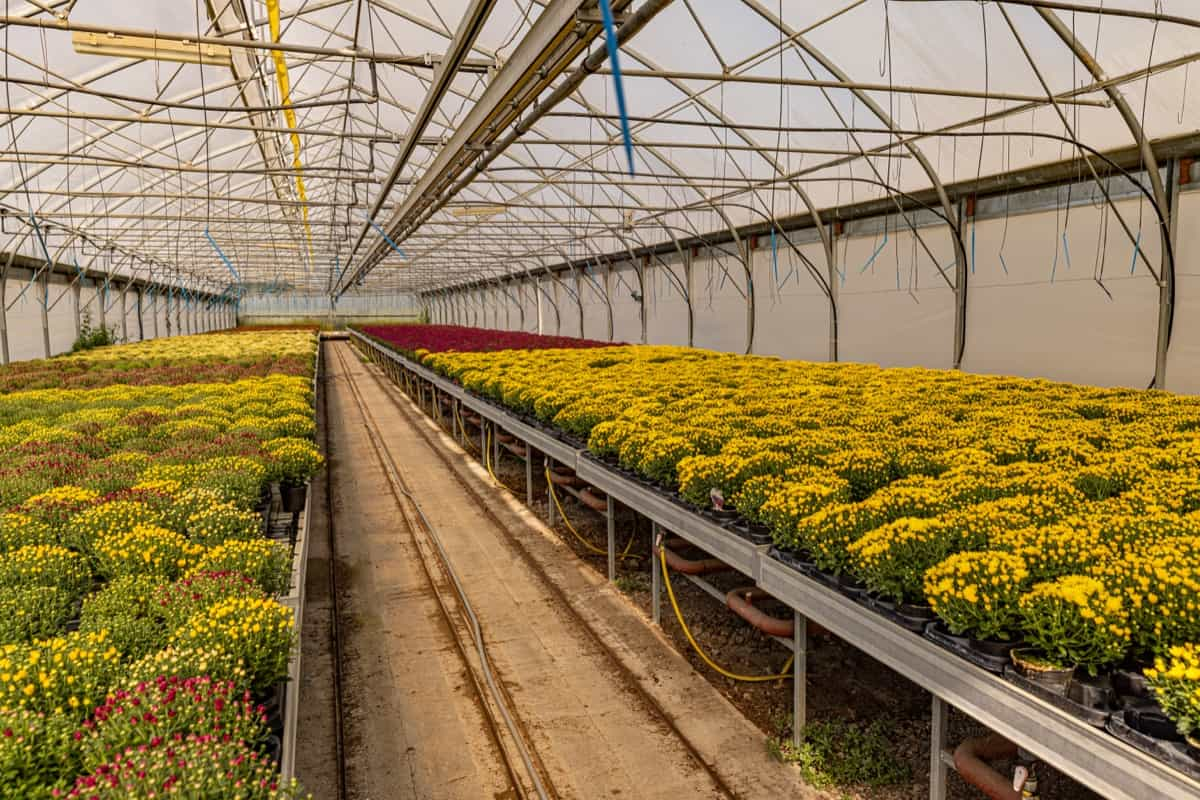
Insecticidal soap is a solution of soap and water that kills soft-bodied pests by disrupting their cell membranes. Neem oil, an extract of seeds of the neem tree, acts as a repellent, antifeedant, and growth disruptor for many pests. It also has fungicidal properties that can prevent fungal diseases like powdery mildew. Mixing two tablespoons of neem oil with 1 gallon of water and spraying the plants every 7 to 14 days is recommended.
Common Chrysanthemum Pests and Their Control
- Aphids: Small, soft-bodied insects that suck sap from buds and leaves. They may be black, green, red, white, or yellow.
- Damage: They cause distorted growth, yellowing, and wilting of leaves. They also secrete honeydew, which attracts sooty mold and ants. They may transmit viral diseases.
- Control: Spray with water to dislodge them or use insecticidal soap, neem oil, or pyrethrin-based products. Introduce beneficial insects such as ladybugs, lacewings etc.
- Leaf miners: Larvae of various insects that tunnel inside the leaf tissue. They may be flies, moths, beetles, or wasps.
- Damage: They create winding trails or blotches on the leaves, reducing their photosynthetic ability and aesthetic appeal.
- Control: Remove and destroy infested leaves or use systemic insecticides such as imidacloprid or spinosad.
- Mites: Tiny arachnids that feed on plant cells with piercing mouthparts. They may be red or black.
- Damage: They cause stippling, bronzing, curling, or dropping of leaves. They may also produce fine webs on the plant.
- Control: Spray with water to dislodge them or use miticides such as horticultural oil, sulfur, or abamectin.
- Thrips: Slender insects with fringed wings that feed on plant sap with rasping mouthparts. They may be black, brown, or yellow.
- Damage: They cause distorted growth, silvering, or browning of buds and flowers. They may also transmit viral diseases.
- Control: Remove and destroy infested plant parts or use insecticides such as spinosad, pyrethrin, or acephate.
In case you missed it: Pest Management in Sorghum: Major Insect Pests of Sorghum, Control, and Prevention
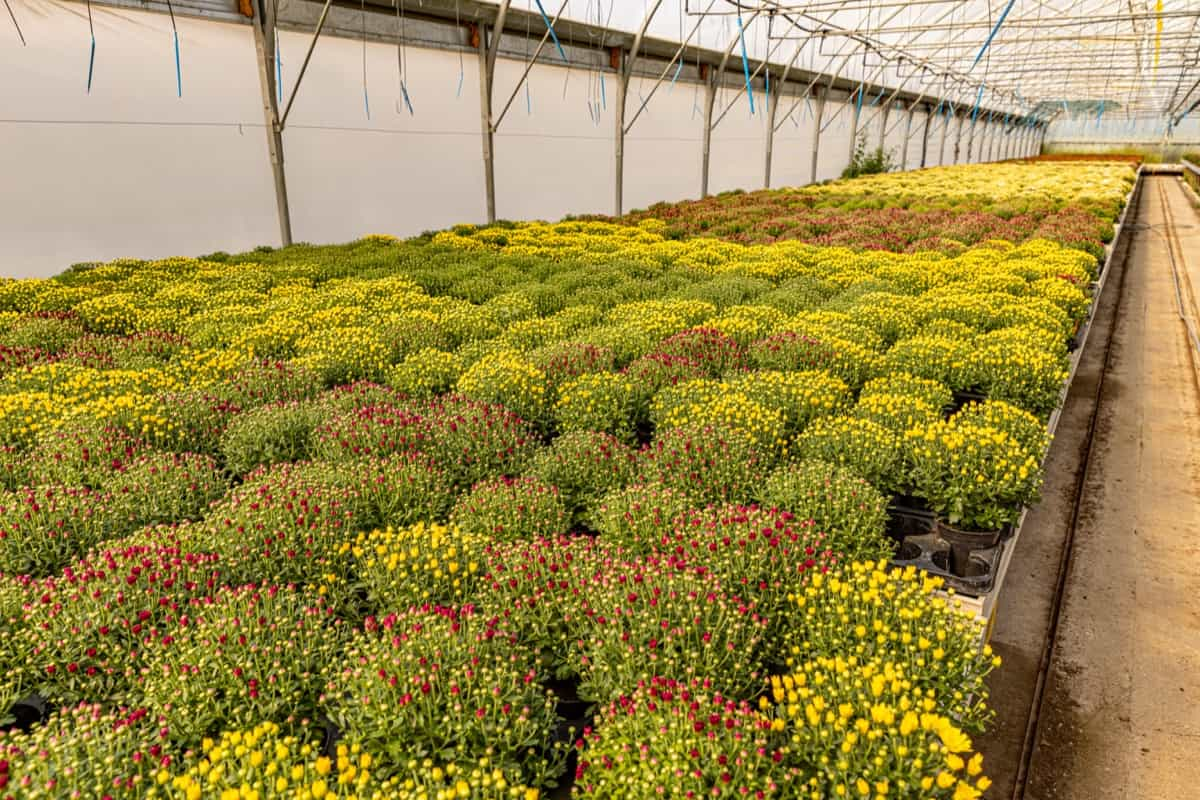
Common Mum Diseases and Their Management
- Powdery mildew: A fungal disease caused by various species of Erysiphe, Golovinomyces, Leveillula, Microsphaera, Phyllactinia, Podosphaera, Sphaerotheca, etc.
- Damage: White or gray powdery coating on leaves, stems, buds, or flowers. Reduced growth and vigor. Premature leaf drop or flower abortion.
- Control: Avoid overhead watering and crowded planting. Prune infected plant parts and dispose of them properly. Apply fungicides such as sulfur, potassium bicarbonate, or myclobutanil.
- Leaf spot: A fungal disease caused by various species of Alternaria, Ascochyta, Cercospora, Colletotrichum, Septoria, etc.
- Damage: Brown or black spots with yellow halos on leaves. Reduced growth and vigor. Premature leaf drop or flower abortion.
- Control: Avoid overhead watering and crowded planting. Prune infected plant parts and dispose of them properly. Apply fungicides such as copper, chlorothalonil, or mancozeb.
- Root rot: A fungal disease caused by various species of Fusarium, Phytophthora, Pythium, Rhizoctonia, etc.
- Damage: Yellowing, wilting, or stunting of plants. Brown or black decay of roots and lower stems. Plant death in severe cases.
- Control: Avoid overwatering and poorly drained soil. Use clean pots and tools. Apply fungicides such as mefenoxam, fosetyl-aluminum, or fludioxonil.
- Botrytis blight: A fungal disease caused by Botrytis cinerea.
- Damage: Grayish-brown fuzzy growth on leaves, stems, buds, or flowers. Brown spots or lesions on plant parts. Reduced growth and vigor. Premature leaf drop or flower abortion.
- Control: Avoid overhead watering and crowded planting. Prune infected plant parts and dispose of them properly. Apply fungicides such as iprodione, fenhexamid, or cyprodinil + fludioxonil
Seasonal Care for Mum Health
Spring
- After the last frost date in your area, cut back the old stems to about 4 inches from the ground to encourage new growth.
- Apply a balanced fertilizer two weeks until buds form.
- Pinch back the tips of the stems once or twice to promote bushy growth and more flowers.
Summer
- Water the plants regularly, especially during dry spells.
- Mulch the soil to conserve moisture and prevent weeds.
- Monitor the plants for pests and diseases and treat them accordingly.
- Stop pinching back the stems by mid-July to allow buds to form.
Fall: Enjoy the colorful blooms of your mums. Deadhead the spent flowers to prolong the flowering period. Water the plants until the ground freezes to prevent dehydration. Apply a layer of straw or evergreen boughs over the plants to protect them from winter damage.
Winter: Leave the plants dormant and prune them in spring. Remove the mulch gradually in early spring as the new growth emerges.
In case you missed it: Integrated Pest Management for Greenhouse Crops: IPM Strategies for Greenhouse Plants
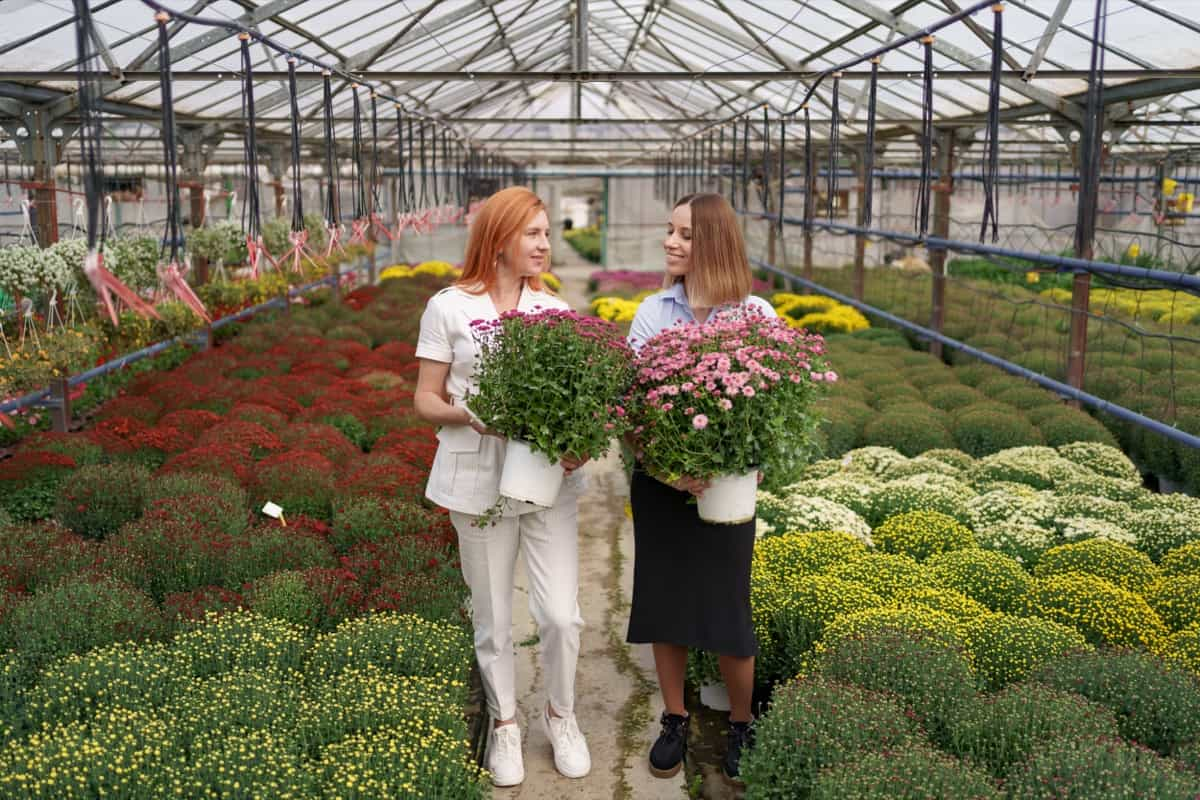
Conclusion
Mums are popular fall flowers that can brighten up any garden or landscape. They are relatively easy to grow, care for, but they may face some challenges from pests and diseases. By following the tips above, you can prevent or manage most of the common mum problems and enjoy healthy and beautiful plants for years to come.
- Types of Pesticides Used in Agriculture: A Beginner’s Guide
- Economical Aquaculture: A Guide to Low-Budget Fish Farming
- 15 Common Planting Errors That Can Doom Your Fruit Trees
- How to Make Houseplants Bushy: Effective Tips and Ideas
- Innovative Strategies for Boosting Coconut Pollination and Yield
- Pollination Strategies for Maximum Pumpkin Yield
- The Complete Guide to Chicken Fattening: Strategies for Maximum Growth
- Natural Solutions for Tulip Problems: 100% Effective Remedies for Leaf and Bulb-Related Issues
- Revolutionizing Citrus Preservation: Towards a Healthier, Greener Future
- Natural Solutions for Peony Leaf and Flower Problems: 100% Effective Remedies
- Maximizing Profits with Avocado Contract Farming in India: A Comprehensive Guide
- Natural Solutions for Hydrangea Problems: 100% Effective Remedies for Leaf and Flowers
- The Ultimate Guide to Choosing the Perfect Foliage Friend: Bringing Life Indoors
- From Sunlight to Sustainability: 15 Ways to Use Solar Technology in Agriculture
- The Ultimate Guide to Dong Tao Chicken: Exploring from History to Raising
- The Eco-Friendly Makeover: How to Convert Your Unused Swimming Pool into a Fish Pond
- Mastering the Art of Delaware Chicken Farming: Essentials for Healthy Backyard Flocks
- 20 Best Homemade Fertilizers for Money Plant: DIY Recipes and Application Methods
- How to Craft a Comprehensive Free-Range Chicken Farming Business Plan
- Brighten Your Flock: Raising Easter Egger Chickens for Beauty and Bounty
- How to Optimize Your Poultry Egg Farm Business Plan with These Strategies
- Subsidy for Spirulina Cultivation: How Indian Government Schemes Encouraging Spirulina Farmers
- Ultimate Guide to Raising Dominique Chickens: Breeding, Feeding, Egg-Production, and Care
- Mastering the Art of Raising Jersey Giant Chickens: Care, Feeding, and More
- Ultimate Guide to Raising Legbar Chickens: Breeding, Farming Practices, Diet, Egg-Production
- How to Raise Welsummer Chickens: A Comprehensive Guide for Beginners
- How to Protect Indoor Plants in Winter: A Comprehensive Guide
- Ultimate Guide to Grow Bag Gardening: Tips, Tricks, and Planting Ideas for Urban Gardeners
- Guide to Lotus Cultivation: How to Propagate, Plant, Grow, Care, Cost, and Profit
- Agriculture Drone Subsidy Scheme: Government Kisan Subsidy, License, and How to Apply Online
- Ultimate Guide to Raising Araucana Chickens: Breed Profile, Farming Economics, Diet, and Care
- Bringing Hydroponics to Classroom: Importance, Benefits of Learning for School Students
- Ultimate Guide to Raising Polish Chickens: Breed Profile, Farming Economics, Diet, and Care
- Ultimate Guide to Raising Australorp Chickens: Profile, Farming Economics, Egg Production, Diet, and Care
- Silkie Chicken Farming: Raising Practices, Varieties, Egg Production, Diet, and Care
- Sussex Chicken Farming: Raising Practices, Varieties, Egg Production, Diet and Care